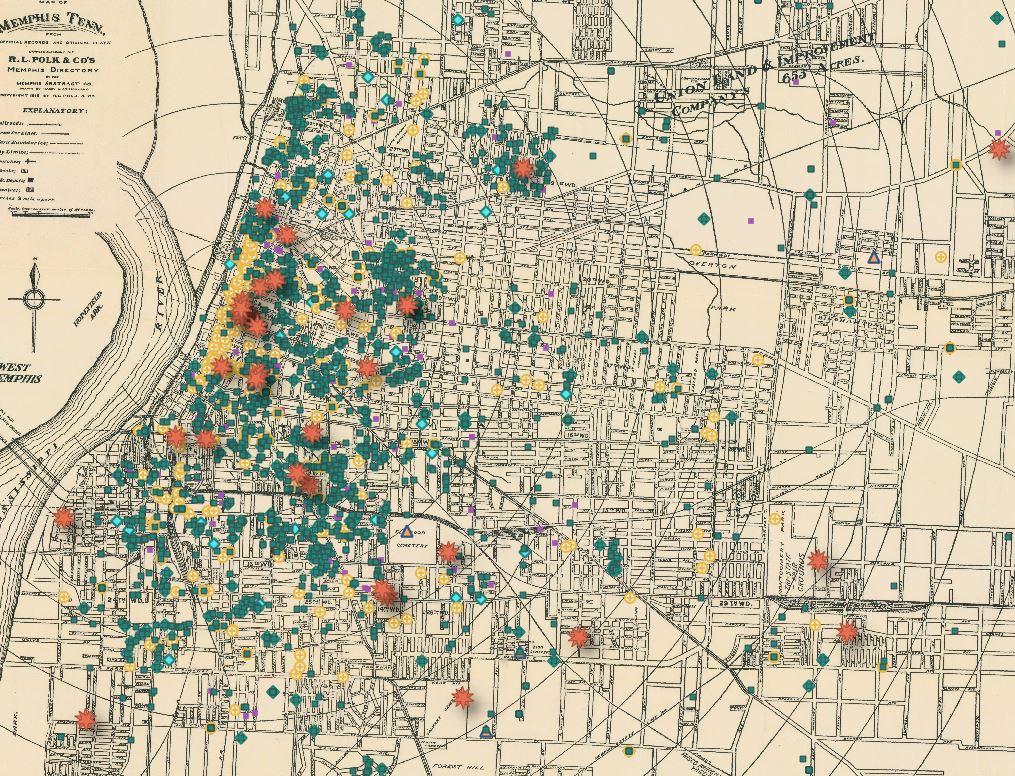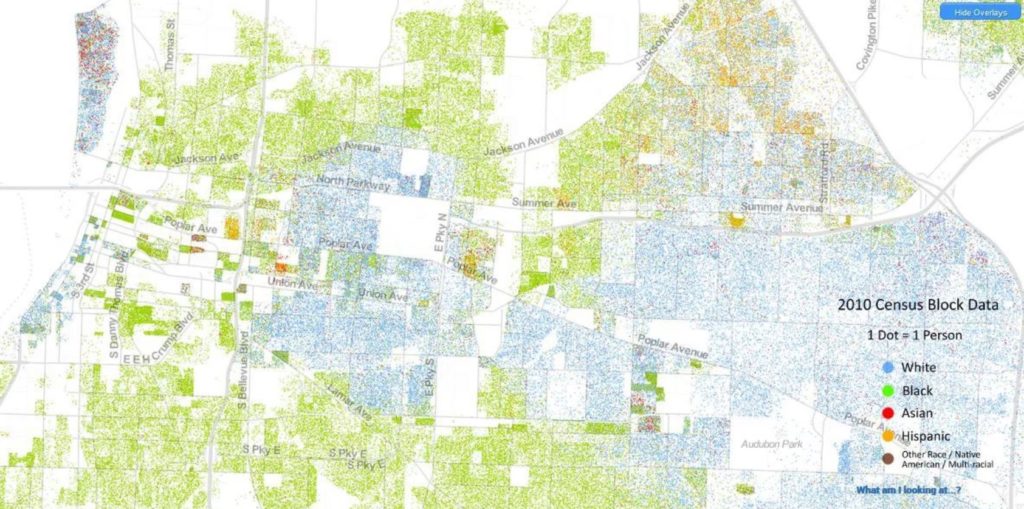About
T. H. Hayes and Sons
Thomas Henry Hayes, Sr. was a prominent African-American businessman who moved to Tennessee in 1880. He founded the T. H. Hayes and Sons Funeral Home in 1902 at its original address at 245 Poplar Ave. In 1918, the business moved to 680 South Lauderdale St., where it remained for the next 90 years.
As one of the few places in Memphis where African-Americans could receive proper funeral care, T. H. Hayes and Sons became a successful and well-renowned business. Between 1910 and 1919, the Hayes family served a recorded 3,100 people. They provided mortuary services for everyone from paupers to Robert R. Church, the South’s first black millionaire. Hayes “was known to never refuse service and offered personal lines of credit for people” for people who could not pay out-of-pocket, a practice that continued until the business’ closing. After Thomas Hayes, Sr.’s death, his sons, Thomas and Taylor, and Taylor’s wife, Frances, continued the business. The funeral home operated until Frances’ death in 2010 and was considered the oldest black business in Memphis at the time of its closing. Despite this acclaim and a place on the National Historic Register, the building at 680 S. Lauderdale was demolished in 2011. Today, the empty lot contains only a historical marker remains to celebrate the distinguished history of this celebrated business.
Studying this history prompted the question: how had the urban landscape of Memphis changed over the last century? And how did that change reflect the evolving social and political climate of the city?
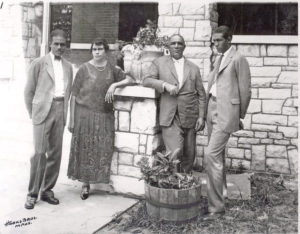
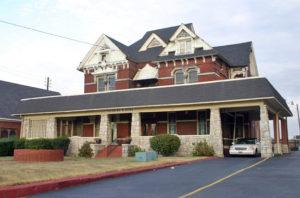
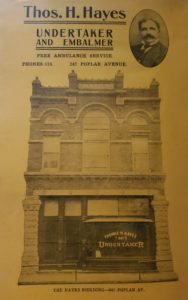
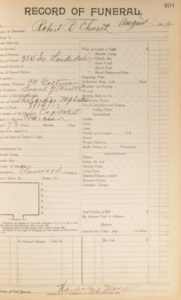
The Ledgers
While the business’ physical structure is no longer extant, many traces of its history remain. In the early 20th century, the funeral home kept detailed records in a series of ledgers. The ledgers, ENTER BRAND NAME, were standard in funeral homes across America. The ledgers recorded information such as an individual’s name, cause of death, age, and occupation. The ledgers also record 5 key points of geographic information: “Place of Death,” “Physician Residence,” “Funeral Services At,” “Internment At,” and “Residence.”
The Hayes ledgers range from 1904-1930, with the bulk covering 1907-1918. With geographic records relating to over 5,000 African-American individuals, these ledgers provide a detailed view of the geographic layout of African-American life in Memphis leading up to the city’s 100th anniversary.
Memphis: Then and Now
Memphis, Tennessee lies on the eastern bank of the Mississippi River, midway between St. Louis and New Orleans. In 1910, the greater Memphis area measured approximately 56 square miles, with unincorporated townships and smaller settlements reaching much further. This area, encompassed in the project map, had a population of approximately 150,000 people. A 1911 study found that 63,282, roughly 42%, of these were African-Americans, 64% of whom lived “south of Madison Avenue and west of the Southern and Frisco railroads.” Analysis of the georeferenced map supports this finding.
Today, the city covers 324 square miles and has a population count of about 654,723. Based on the 2010 census, “demographic trends [suggested] that in the near future, metropolitan Memphis will become the first large metropolitan area in the United States populated by an African-American majority.” Memphis is a city that both embraces and is at odds with its history. It is the home of the Blues and the city where Elvis became famous; it is also the place where Dr. Martin Luther King, Jr. was assassinated. In the 1870s, it was a Southern city where white and black families lived next door to each other and African-American politicians held power. Today, it remains one of the most segregated cities in America.
